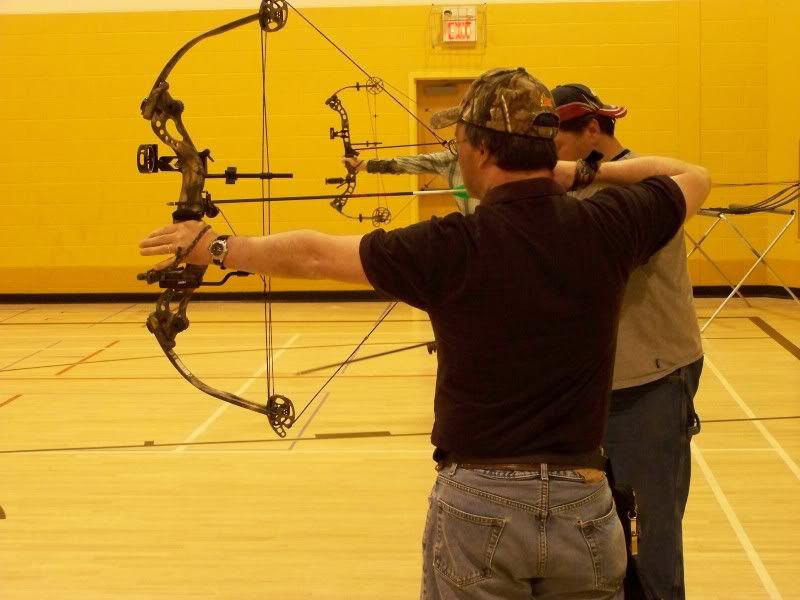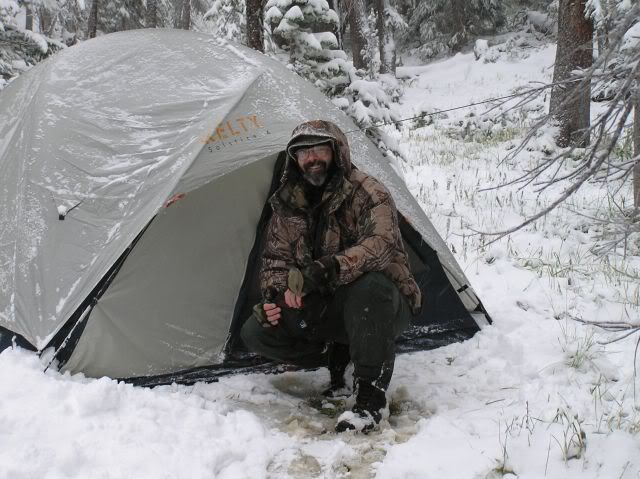Post by BT on Jan 13, 2009 11:03:16 GMT -5

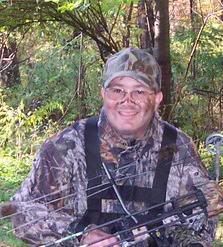
DOEGIRL
 ..........STILLLEARNING
..........STILLLEARNING 
The following thread will include the real life experiences of two forum members of the archersedge during the year of 2009
Both members will be shooting low bow weight (match/near match) as well as short (matching) draw lengths.
The purpose of this thread is to aid those in the future who are faced with this dilemma.
(IT WILL ALSO SERVE TO AID THOSE OF US WHO NEED TO ARGUE THEORY ;D)
This thread and it's findings can apply across the board for all shooters and should be viewed in that regard.
Much talk and writing has been done in reference to the debate. To date, I have never seen a heads up analysis of the Pro/Con in the big picture as it applies to the shooter and the game.
As I pick and post and re-modify this opening thread, I hope that we will get a real view of both set ups.
 ____________________________
____________________________Stilllearning:
My hope and I think it is the hope of others involved in this is Doegirl and I will be coming up with test results for the two setups (specifics on the setups to come latter). We will post results with what changes we have made and give what we think may be happening.
At that point I am going to rely pretty heavy on People like, BT, SMJ, Greg, Eastern and others that have a good understanding on this stuff to make suggestions and comments.
This data is to be used to give a person the knowledge base to make an informed decision on a setup for there shooting ability and what they are hunting (white tail deer, moose, elk, etc.).
I said this to Eastern as we talked about this and it was pointed out there are a lot of factors involved. If you shoot or hunt in an area that is confined or semi open you may be concerned with flat flight leading you to look at how to get the most speed out of you bow so you can shoot flat and still get acceptable penetration. Is it possible? Lets find out.
Then again when hunting in open areas you may be concerned with Momentum down range and flat flight might not matter so much. No tree limbs in the way so maybe this is good spot to sacrifice the trajectory of the arrow to get good momentum down range.
KE is measured and calculated at the bow. What is it down range as the light arrow slows? Is it better to put more weight on and how much does it affect flight? at what point do you stop adding or taking away?
All those answers should only act as a guide line for others. If I can help in some way make it easier for someone else and help myself understand it better I am all for being a guinepig on this one.
SMJ I think people like you can help keep us on track as well.
This really doesn't answer your question but it does give you some insight as to why I am getting involved in this.
I also want to state right here and now that the direction I am going to go (Speed and flat flight) is not something that I am going to argue is the best idea for all and is the only way to go.
 it may not be for you.
it may not be for you.  But I will say that I like the idea of using one pin out to 30 yards and when I use to shoot my Bear Whitetail II. I was more concerned with getting momentum than speed.
But I will say that I like the idea of using one pin out to 30 yards and when I use to shoot my Bear Whitetail II. I was more concerned with getting momentum than speed. 
BT
With a 305gr. arrow (equates to 6gpp) I got an average of 249fps.
With a 252gr. arrow (equates to 5GPP) I got a consistent 263fps.
After putting the mechanics of the bow back as they were previously and shooting the same 5gpp, I got 291 @ 49#
With the string loaded up with all the accessories (except the kisser) I finished with 279 fps @ 49# & 25"
I hope to hear that we will be maintaining 275 when the kisser is re-attached.

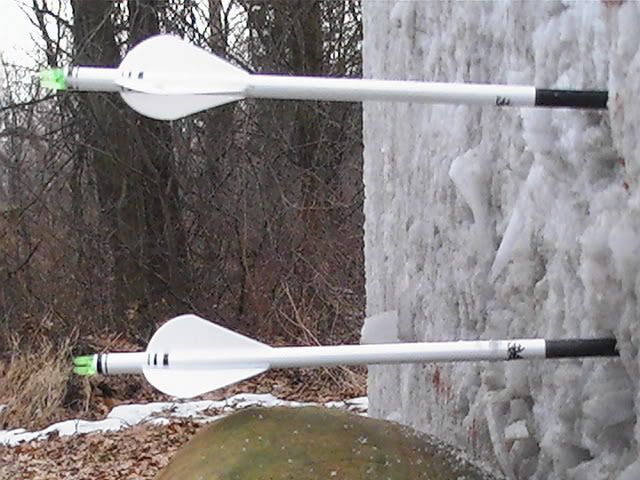

4" gap from 0 - 30 yards
___________________
I will be sending my bow off to BT tomorrow morning. But before I sent it out I wanted to try a few shots into the pail to see what would happen. I will have to get the weight of the arrows once I can borrow a grain scale.
This Martin Prowler SE is shooting at 240 ft per second and that is not that fast at all. The pull is set at about 54 lb of pull.
So I started out with a pale full of water and some arrows. I took the Easton Epic and put a 75 gr boss bullet on it and another arrow with the same head but it is the Easton Epic ST shaft. I wanted to see if there was any difference. All shots taken from 20 yards. The flat flight limit of this bow.
Here are the photos with the Boss bullets.
I was a little surprised to see them up to the fletches. Very interesting.

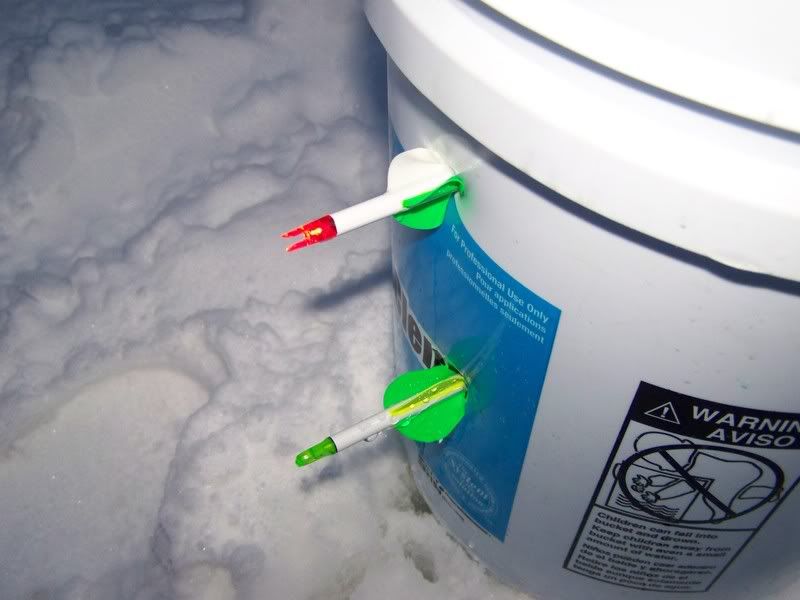
Older epic on top and the new ST technology on the bottom.
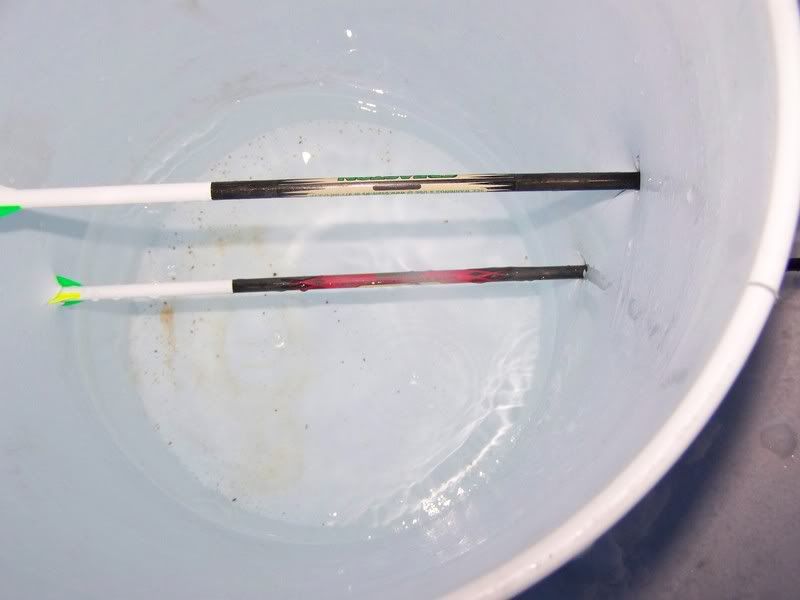
This photo in here only because I found it neat with the lighted nock.

OK after some repairs to the pail, you have to love duct tape, and I turned the pail 90 degrees from the first shots. It was getting darker and harder to see the pail so I put some duct tape on the pail so I would have points of aim.
I took two more arrows which were the same as the first two shots, one Easton Epic and one Easton Epic ST. They were both fitted with 85 gr Magnus Stinger with Bleeder blades. The actual weight on these is closer to 95 gr for some reason. Two more shots and I am not sure what to think. You look and make your own conclusions.

Wait a minute ..... Were is the other arrow? There is the second hole.
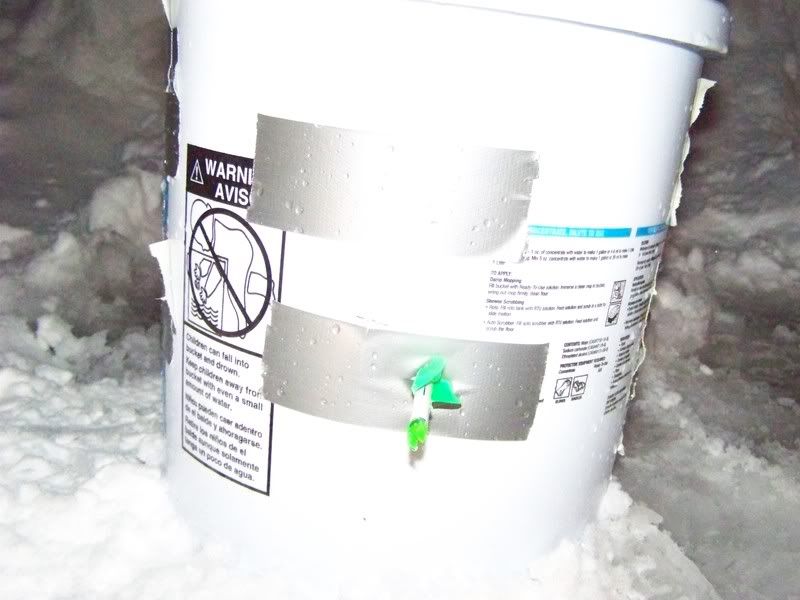
Oh there it is..... but wait that is the older larger diameter arrow and it is that far through?

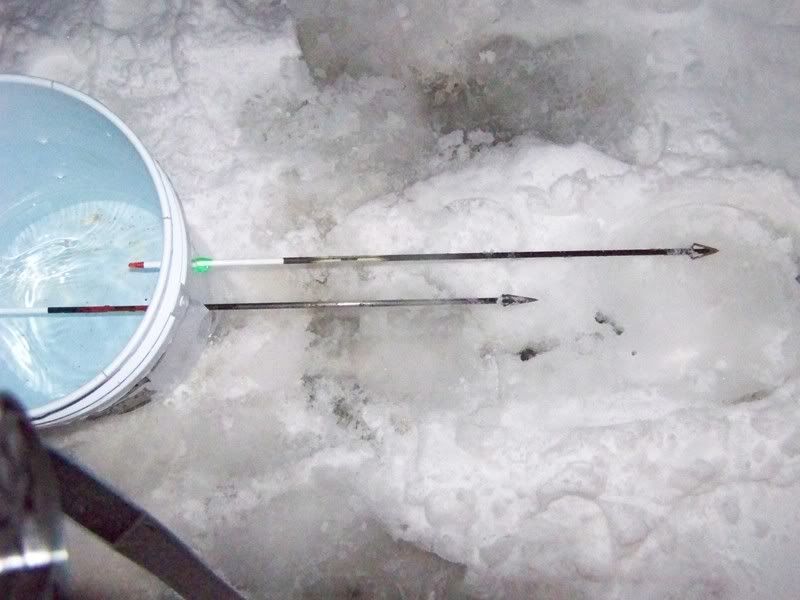
Very interesting. I only wish I had the new arrows that BT suggested I use to try them. BT if you have a chance to try it when the bow gets there could you try the fast flight arrows so we have a base line for the new bow when it arrives?
It will be interesting to see what results we get from the bow BT has set up at 280 ft per second and shooting poundage in the hight 40's.
OK you wanted grains and calibration measurements of the arrows so here we go. Lets see....... we will put the calibration measurements first.
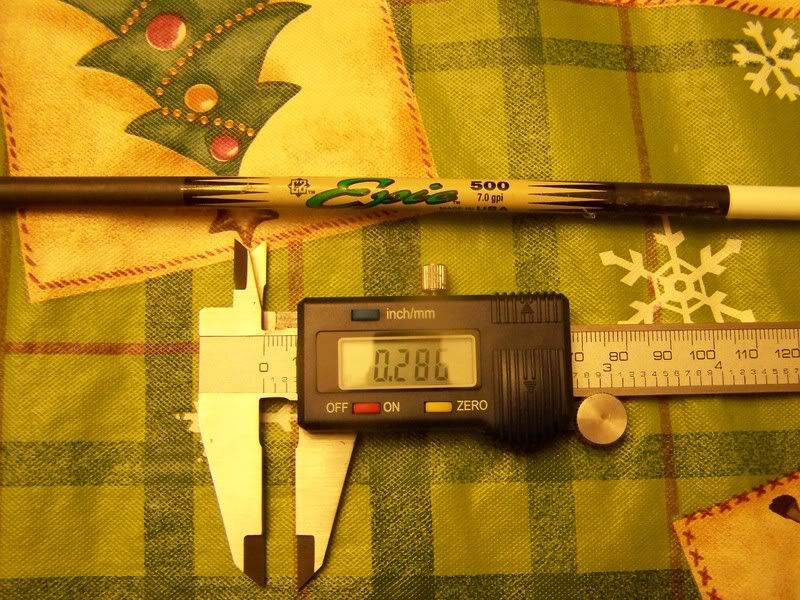
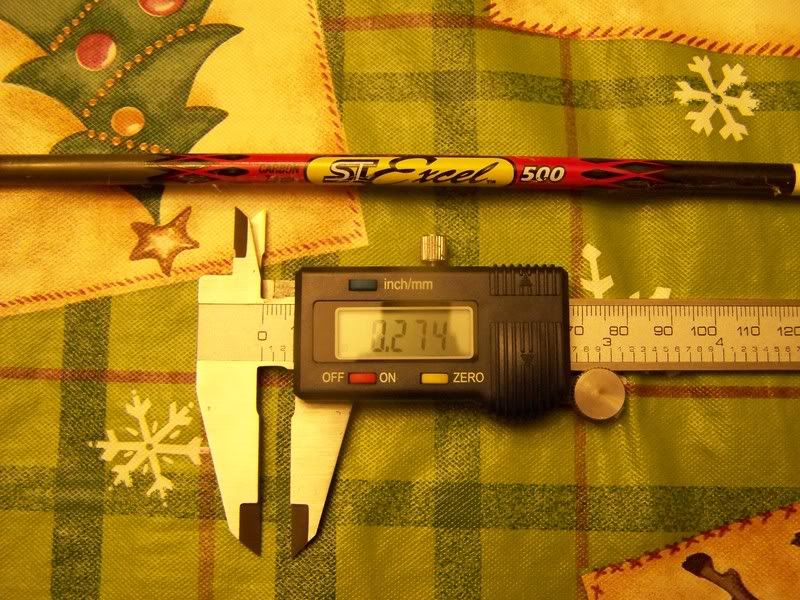
I think you can tell the two different arrows from the photos.
Now lets see the grain differences between the two broad heads.
Stinger

Boss Bullet
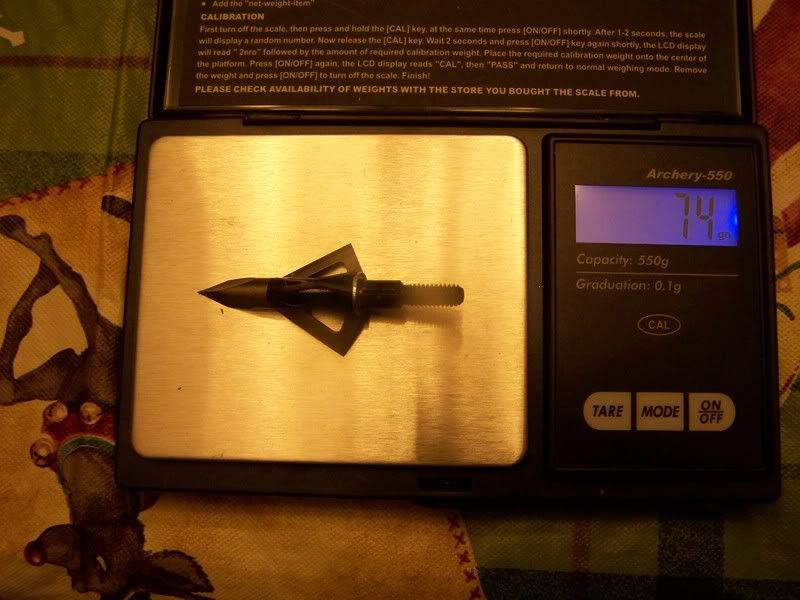
now total weight of arrows and broad heads.
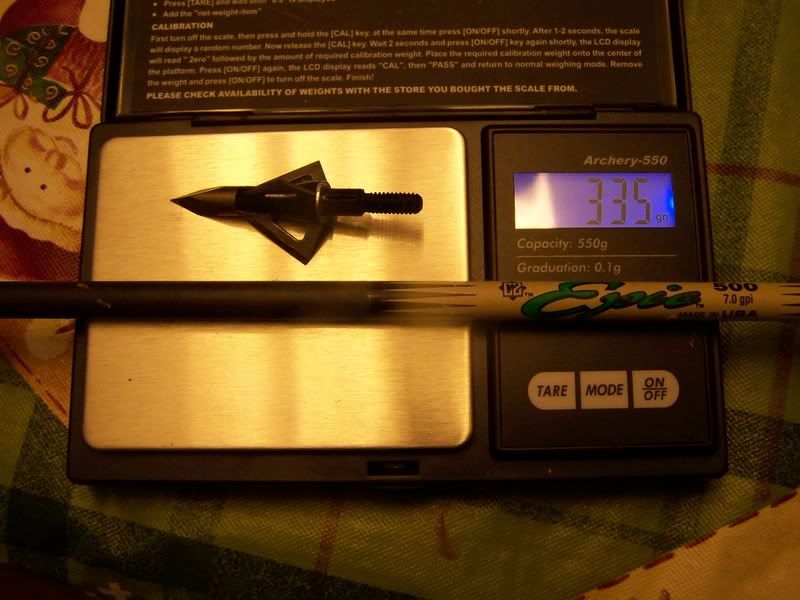


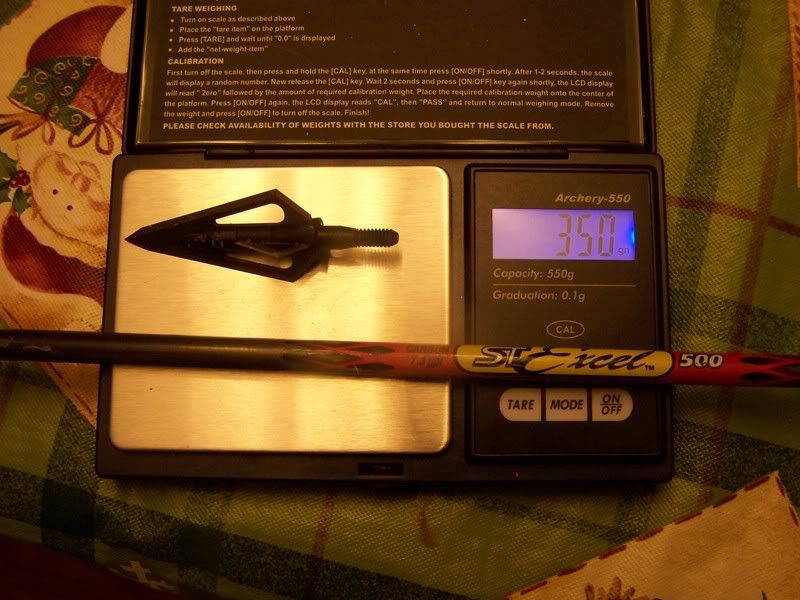
Now I have another confession to give you....... I am not sure what all this shows me.
 I am really going to have to look at this and see if I can come up with some thoughts.
I am really going to have to look at this and see if I can come up with some thoughts. 


.
I am really sorry that I have been slow in getting you any results but I am sure that all I will gain is flat flight range, which I personally like, but no gain on penetration. Not sure of that but that is my thoughts on it. I have nothing to prove it.
2 more feet of snow to melt. I better get at finding some buckets.
I did notice that on Tuesday night when shooting the Cougar the difference in flight of the old arrows Epic XT's and the new Speed Pro's was quite a bit.
I fired two of the Speed Pro's and held center at 20 yards. My hits were 5 to 6 inches high. I then by accident pulled out a XT and sent it down range not noticing that it was the wrong arrow. It hit right on the bullseye.
One of the other shooters was standing there watching me shoot and mentioned that she said it was quite noticeable that the speed pro's were flying very flat and noticeably faster than the old arrows. One of the other shooters who is a bow technician (he works on bows for people) said he can understand why I would want to get that kind of speed out of my bow to get the flat flight but he was VERY scared of wear and tear on the bow. He is worried it might tear it apart. The noise increase when shooting the Speed pro shafts was quite evident. It allowed the noise of the bow to increase a lot.
It will be interesting to get back to the longer distances.
OK after tonights shoot at the church I am really confused. I was shooting along and doing OK for have shoulders so sore that I could hardly lift and hold the bow steady. I wasn't hitting bullseye or anything but was respectable. I retrieve one set of the shoots and heard a weird noise on the pulling of the new speed pro arrows.
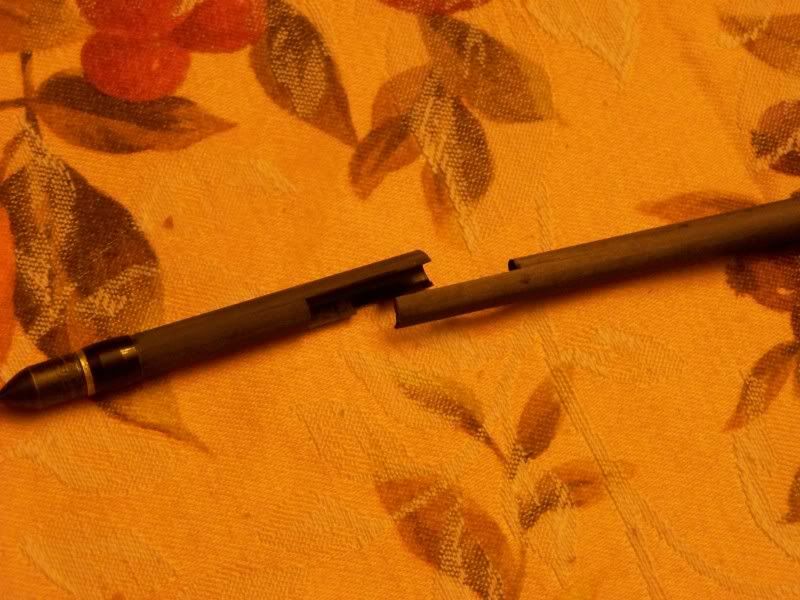

This above arrow was the one that I hit the knock on last week and I am wondering if it was possible that it weekend the arrow??
Then the set of arrows I heard another noise when I pulled one of the arrows. I noticed a cracking sound when I would flex the arrow and then SNAP.
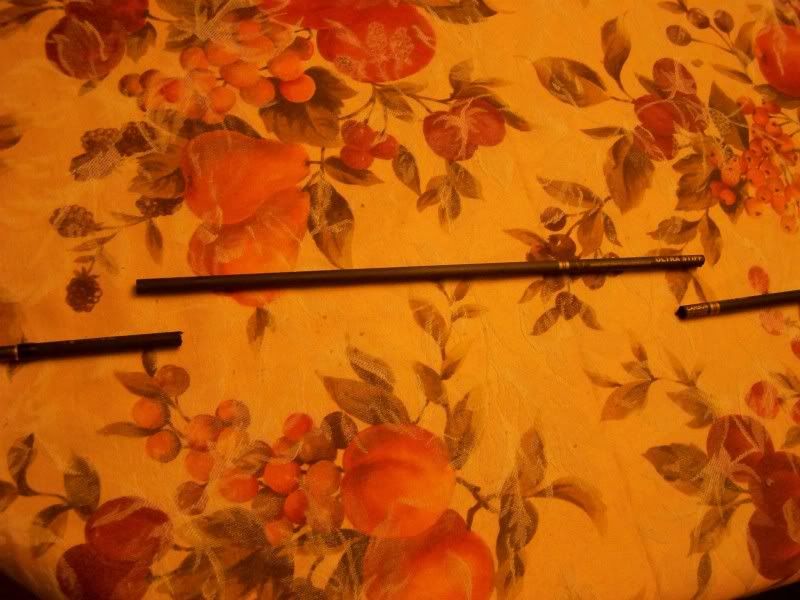
Now I am wondering if this was the arrow that hit the knock last week or am I crushing the arrows with my arrow puller?
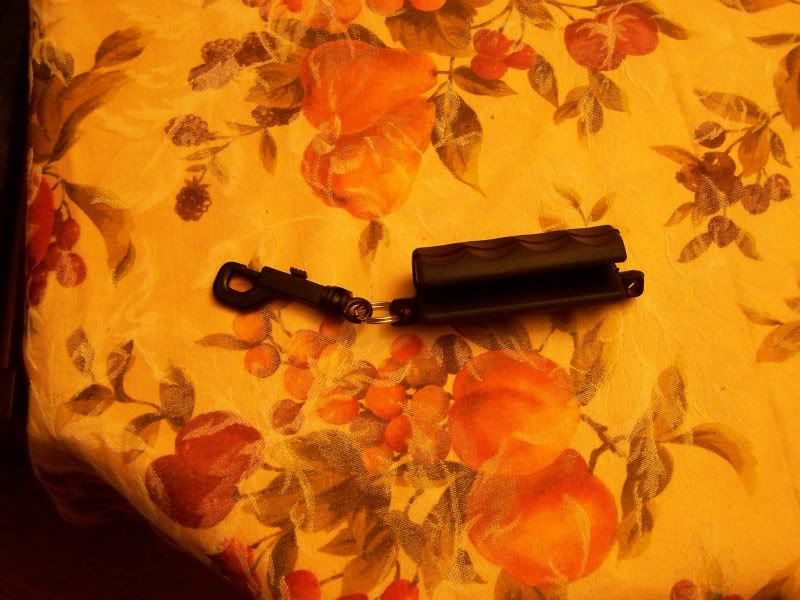

Anyway I am not sure what is going on and I now have to get some more arrows fletched.
I also hope to be shooting outdoors in the next week or two. I should be able to chrono the bow then.
[/b]
Doegirl:
Basically, two shooters that are draw length and draw weight challenged will each follow a path of two different schools of thought. Stilllearning will go with the lighter arrow/flat flight route. I will be a student of Dr. Ashby for a year. Stilllearning and I shoot very similar setups that generate about the same KE and speed.
This thread will become a journal where we both will post our experiences. That will allow the reader to see and compare the results in one thread. The plans have not been laid out in minute detail how we will carry forth. But it's our intentions to present the most solid and usable information as possible.

Got the bow setup today. QAD hunter rest, Octane stabilizer, and HHA Optimizer single pin sight. Chrono'd a few different arrows. The bow is set at 54lbs, 26.5" draw. The 340grain arrow clocked in at 270fps, a heavier 450 grain arrow did 236fps. That works out to about 55ft lbs of KE.
Ashby himself can't even achieve 0.57 . Really, the 82lb longbow he uses in the 2007 updates he gets 0.52. I forget what weight arrow he was using. I don't think it's possible to get .57 out of my setup.
I might have to jack up the poundage slightly, but if I work up to a 700+ grain arrow, I should be able to hit .57
I did pick up a half dozen Easton Full Metal Jackets. I intentionally got the .400 spine so I could play around with heavier heads. I guess these will be my "light" arrows.
I would imagine something like Grizzlystik Alaskans could get me to the 700 mark pretty easy. I just want to work my up in increments as much as I can,
26.5" arrow, COC 2blade. A 200 grain head should get me to 500. Right now, with a 125grain tip, I'm right at 425grains.
**A 700 grain arrow is above the "heavy bone threshold", has a momentum of .57, and will go really, really freakin' slow.
I just ordered the components necessary to make my rig "Ashby Approved". 160gr Grizzly Broadheads w/ 42 grain long adapters, and 8 gpi weight tubes for Axis arrows. This should get me very close to 700grains and an FOC around 20%. I'll verify the stats when the components come in.
Another order placed...3gpp and 5gpp weight tubes, a "test kit" of field points ranging from 125gr-250gr, 100grain steel broadhead adapters, and 100 grain brass inserts for Axis arrows. I might have to bump up to a 340 spine to make the weight, FOC, spine requirements. But I'll experiment with the 400 shafts first.
I'm finding that creating an arrow that weighs @ least 650 grains AND has at least 19% FOC AND is properly spined for my bow is turning out to be quite a challenge. The software programs do not take into account the length of the broadhead when calculating FOC. The grizzly is 2 3/4" long and makes quite a bit of difference.
Another concern I have is that the extreme FOC might skew the results of the testing. For instance, my heavier arrows might outpenetrate Stilllearnings, but was it the weight or the extreme FOC, or both? For now I'll focus on building a heavy arrow with "normal" FOC (15% and under)
personally I would much rather have the extreme FOC as opposed to the extreme weight. But my arrow would only weigh 490grains-laughable by Ashby standards.
I really do not think going above 500-550grains is going to make any bit of difference. But God forbid I shoot any faster than 190fps
Right now, the FMJ's come in at 615grains w/ 5gpp weight tubes, 11% FOC, and 3 4" feathers. Next step is taking them to the range.
Well I think I did it.
I didn't want to buy another half dozen FMJ's , but I did. I got the 340 spine. The guy behind the counter at the proshop questioned my selection. I explained to him what I intended to do. "Uh-huh", which I guess is code for "lady, you're nuts"
So I have Axis FMJ 340's w/ 4" vanes cut to 26.25", 100grain brass inserts, 160 grain Grizzly BH's with 100grain steel adapters.
Total estimated weight 682 grains with a FOC of 18%. I'll lose a little weight and gain some FOC when I rip off those vanes and put on feathers.
Today I had some free time to play with the "javelins"

I needed to get a new release, so off to the proshop. My arrows weighed in @ 668grains. Speed clocked in at a blazin' 190fps ;D
I'm just glad I got that kind of speed. We also chrono'd the arrows I used last year in Westchester. They weigh 300grains on the nose and chrono'd at 285fps. I've lost 105fps

Anyways I head over to the archery club. It was pretty windy and that new release had me a little edgy (trigger set too light). Regardless, I observed no flight problems from those big old grizzlies. I just got an initial sight in at 20yds. Best I could muster was a 2" group. But that was mostly due to the nut behind the bow


The arrow drop difference between a 300grain, 402grain, and 668 grain arrow. The 668 grain arrow had to be pushed back out of the bale to take the photo:

The wind was really challenging, but the broadheads tracked true:

Today was way too windy for any sort of distance shooting or fine tuning
 . So I did some board breaking.
. So I did some board breaking.  Water buffalo ribs are 3/4"+, and those animals are one of Ashby's favorite test subjects. I found some 3/4" veneered particle board laying around.
Water buffalo ribs are 3/4"+, and those animals are one of Ashby's favorite test subjects. I found some 3/4" veneered particle board laying around. I could not get the broadheads to fully penetrate the board
 I'm sure it takes quite a bit of pop to drive a 2 3/4" long broadhead completely through a thick board. A shorter chisel tip head probably would have cleared the board.
I'm sure it takes quite a bit of pop to drive a 2 3/4" long broadhead completely through a thick board. A shorter chisel tip head probably would have cleared the board.I threw in a weight tube which bumped up the weight to 880grains. All I accomplished was driving the rear of the broadhead into the shaft, splittling both the aluminum and carbon core.
 A washer might have to be added to protect the shaft in the future. I'm out of commission at the moment, since a mod screw on my bottom cam mysteriously dissappeared.
A washer might have to be added to protect the shaft in the future. I'm out of commission at the moment, since a mod screw on my bottom cam mysteriously dissappeared.So, for the moment, no buffalo for me

I found the courage to put broadhead to grinder and was pleasantly suprised. Not as painful as I envisioned it to be. I'm going to have to invest in a set of calipers, since eyeballing the width against a tape measurer is a pain in the butt. The tanto tip is not as wide, but I did not grind the tip down to a COC. I got three heads down to 7/8" width and a 2 grains deviation between the three. I'll reset the bevel, sharpen, and they should be good to go.
I might play around with some other unvented (vented blades are taboo) trad heads like STOS and Zwickey.
We need pictures, so I thought I'd give a little update on my end...
I have a set of 3 grizzlies ground down to 7/8". I know Dr. Ashby says to make the tip COC, but I cut a very small tanto tip on each. An original 160gr Grizzly with a modified one:

Weight and cutting diameter of the modified head:
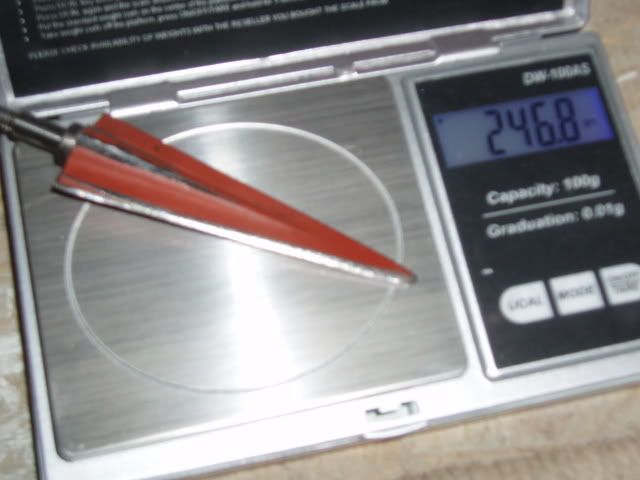
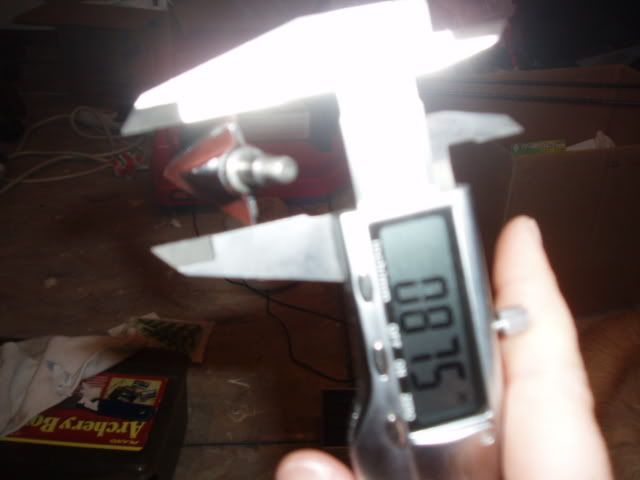
Weight of the original setup:

Weight of the arrow with a modified Grizzly:

I got something finally positive to say. This Ashby setup is a very forgiving one. Enjoyable even
 . I spent a few hours at the archery club doing some fine tuning and practice. Arrow drop? Oh boy. ;D Sighted in for 20yds, I get a 5 inch drop at 25yds and 11inch difference at 30. Using the single pin sight, it's fairly easy to use hold over to compensate. Basically, if I hold high one inch per yard past 20yds, I'll be right where I need to be. I think, with enough practice shooting at unknown distances, I can be competent out to 30yds with this setup.
. I spent a few hours at the archery club doing some fine tuning and practice. Arrow drop? Oh boy. ;D Sighted in for 20yds, I get a 5 inch drop at 25yds and 11inch difference at 30. Using the single pin sight, it's fairly easy to use hold over to compensate. Basically, if I hold high one inch per yard past 20yds, I'll be right where I need to be. I think, with enough practice shooting at unknown distances, I can be competent out to 30yds with this setup.Covert bucket test under street lights.
 No really, I did this tonight under the street lights so the neighbors won't get in in a tizzy for shooting in the backyard. I hate city life
No really, I did this tonight under the street lights so the neighbors won't get in in a tizzy for shooting in the backyard. I hate city life  Anyways, I tried the modified grizzlies, even though they're not close to being sharp.
Anyways, I tried the modified grizzlies, even though they're not close to being sharp.  The arrow got hung up half way up the feathers. I think if the heads actually were sharp the head would have sliced rather than punch through and perhaps cleared the bucket.
The arrow got hung up half way up the feathers. I think if the heads actually were sharp the head would have sliced rather than punch through and perhaps cleared the bucket.
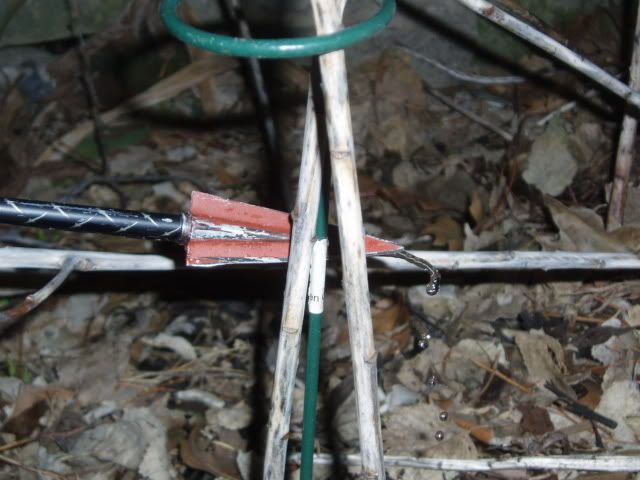

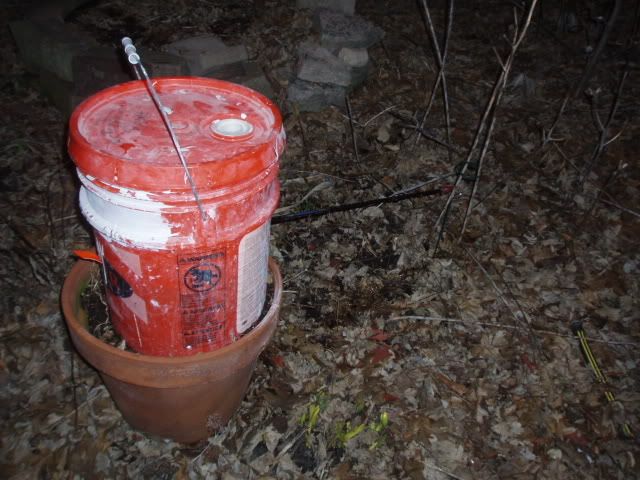
Beautiful day and a good time to tune in the zwickeys. They are pretty well behaved, actually. The 3/4" veneered particle board came out for some penetration testing. The Eskimo out performed the modified Grizzly. The Eskimo is 1 3/16" wide and the modified Grizzly 7/8". Grizz's weigh in at 245 and the Eskimo 260.
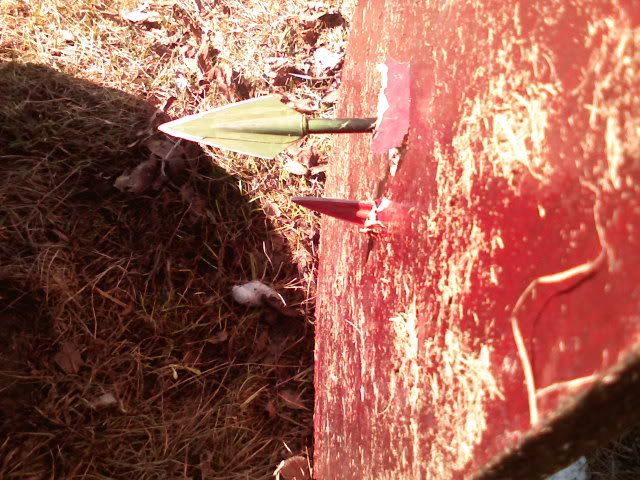
Bucket test! My apologies for the quality of the pics. My essential benign tremors kicked in and there's no stopping that
 The results were inspected and verified by Karl, as seen in the bottom pic
The results were inspected and verified by Karl, as seen in the bottom pic 
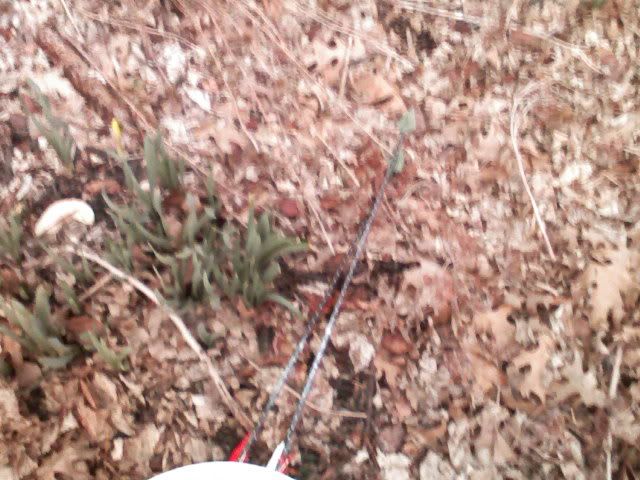
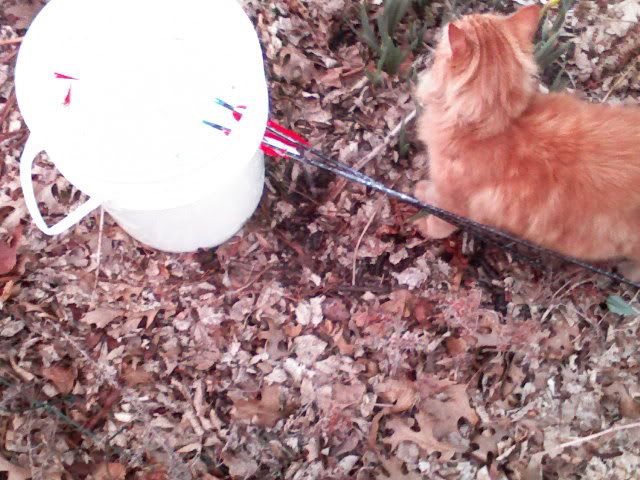
Zwickey Eskimo heads used for this bucket test.
I think, after April's hunt, I will be done with the Ashby experiment.

The momentum arguement is just not logical and is full of flaws. Why does almost the entire archery industry rely on Kinetic Energy? Some might argue that fast bows sell, and there's truth to that. But, let's give those engineers and bow designers some credit, they have some sort of grasp on physics. I think a lot of bowhunters intuitively deduce that because heavier arrows penetrate better, it must be because of momentum. Never occurs to them that a heavier arrow better conserves kinetic energy. Or the effects of friction on arrow penetration. What did I do when I went to skinny Axis arrows and a 2 blade head? Reduced the amount of friction working against the arrow, that's what.
I'm not saying that heavier arrows don't have their place. Saving wear and tear on a bow, quieting a bow down, making a bow easier to tune and shoot, and maximizing downrange KE are all good reasons to bump up the arrow weight. But there is such thing as too much of a good thing. Ashby's recommendation of a minimum of 650grains is just ridiculous for most compound setups and for most situations.
Plus, this is getting really expensive. Luckily some of the components, like the zwickeys, can be used with my recurve. But what the heck am I going to do Axis FMJ 340's cut to 26.25"? You know, about $140.00 a dozen. Plant stakes I guess. I guess I'm bitter because I've realized I'm just chasing windmills....


